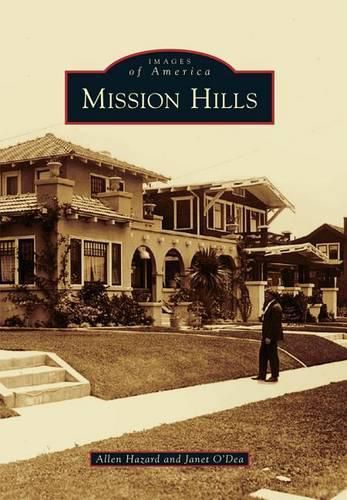Readings Newsletter
Become a Readings Member to make your shopping experience even easier.
Sign in or sign up for free!
You’re not far away from qualifying for FREE standard shipping within Australia
You’ve qualified for FREE standard shipping within Australia
The cart is loading…






Several visionaries shaped the character that defines present-day Mission Hills. First, there was Sarah Miller, stepdaughter of Captain Johnston of the SS Orizaba. She inherited land from him and built a dream home overlooking Old Town and the Pacific Ocean. There was also Kate Sessions, the mother of Balboa Park, whose nursery growing grounds just outside the original Mission Hills subdivision proved difficult for her clientele to traverse, leading her to convince transportation mogul John D. Spreckles to expand the streetcar route to accommodate her business. In 1905, George Marston, a San Diego civic leader, commissioned landscape architect and urban planner John Nolan to implement a development plan for the city. Nolan’s plan, however, was never adopted. In 1908, as if to prove what was possible, Marston’s syndicate formed the restricted subdivision of Mission Hills. Then, in 1909, the city announced plans to celebrate the opening of the Panama Canal. The fuse was lit, and the boom that followed brought builders and skilled artisans to San Diego. As a result, Mission Hills became architecturally magnificent.
$9.00 standard shipping within Australia
FREE standard shipping within Australia for orders over $100.00
Express & International shipping calculated at checkout
Stock availability can be subject to change without notice. We recommend calling the shop or contacting our online team to check availability of low stock items. Please see our Shopping Online page for more details.
Several visionaries shaped the character that defines present-day Mission Hills. First, there was Sarah Miller, stepdaughter of Captain Johnston of the SS Orizaba. She inherited land from him and built a dream home overlooking Old Town and the Pacific Ocean. There was also Kate Sessions, the mother of Balboa Park, whose nursery growing grounds just outside the original Mission Hills subdivision proved difficult for her clientele to traverse, leading her to convince transportation mogul John D. Spreckles to expand the streetcar route to accommodate her business. In 1905, George Marston, a San Diego civic leader, commissioned landscape architect and urban planner John Nolan to implement a development plan for the city. Nolan’s plan, however, was never adopted. In 1908, as if to prove what was possible, Marston’s syndicate formed the restricted subdivision of Mission Hills. Then, in 1909, the city announced plans to celebrate the opening of the Panama Canal. The fuse was lit, and the boom that followed brought builders and skilled artisans to San Diego. As a result, Mission Hills became architecturally magnificent.